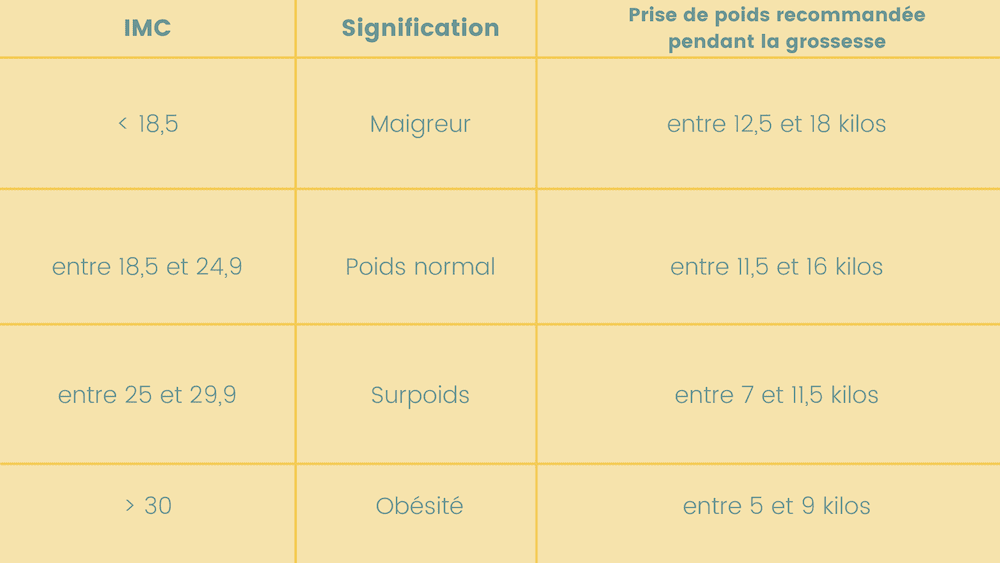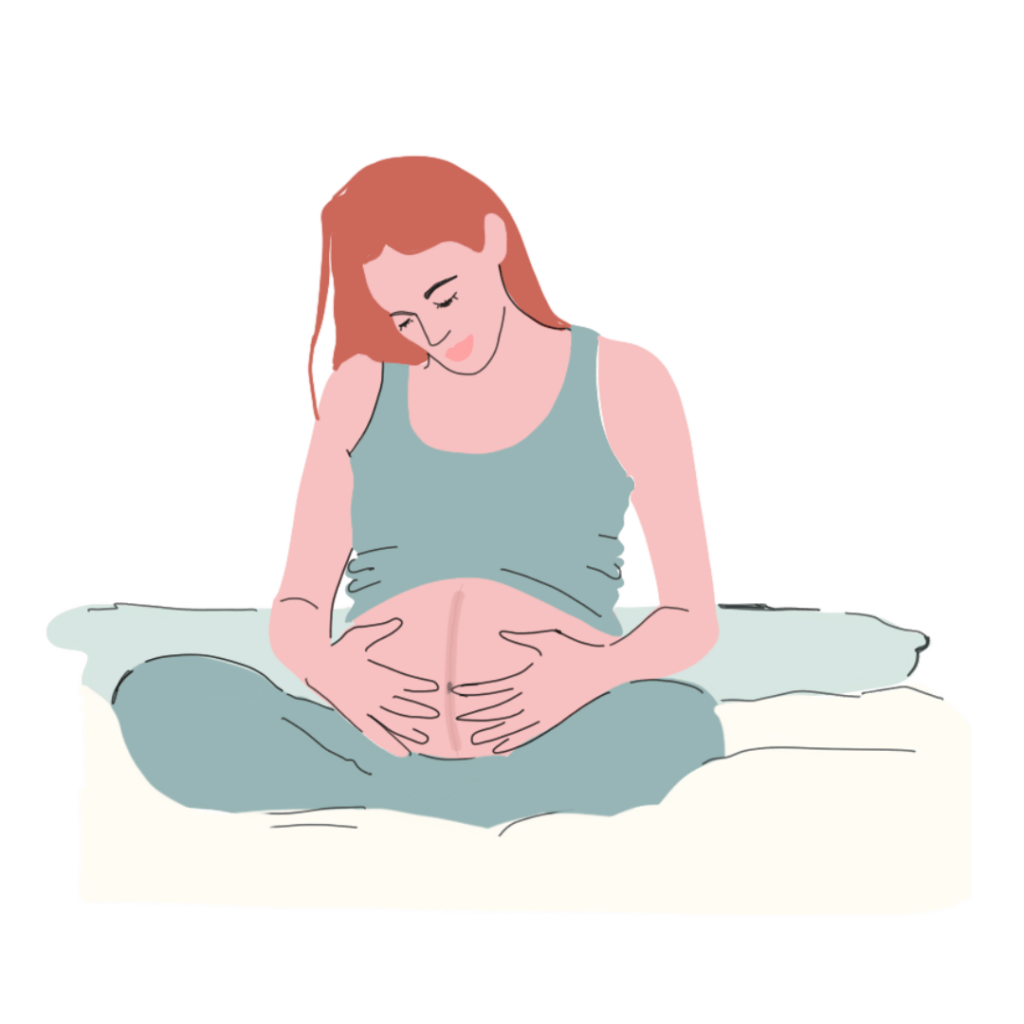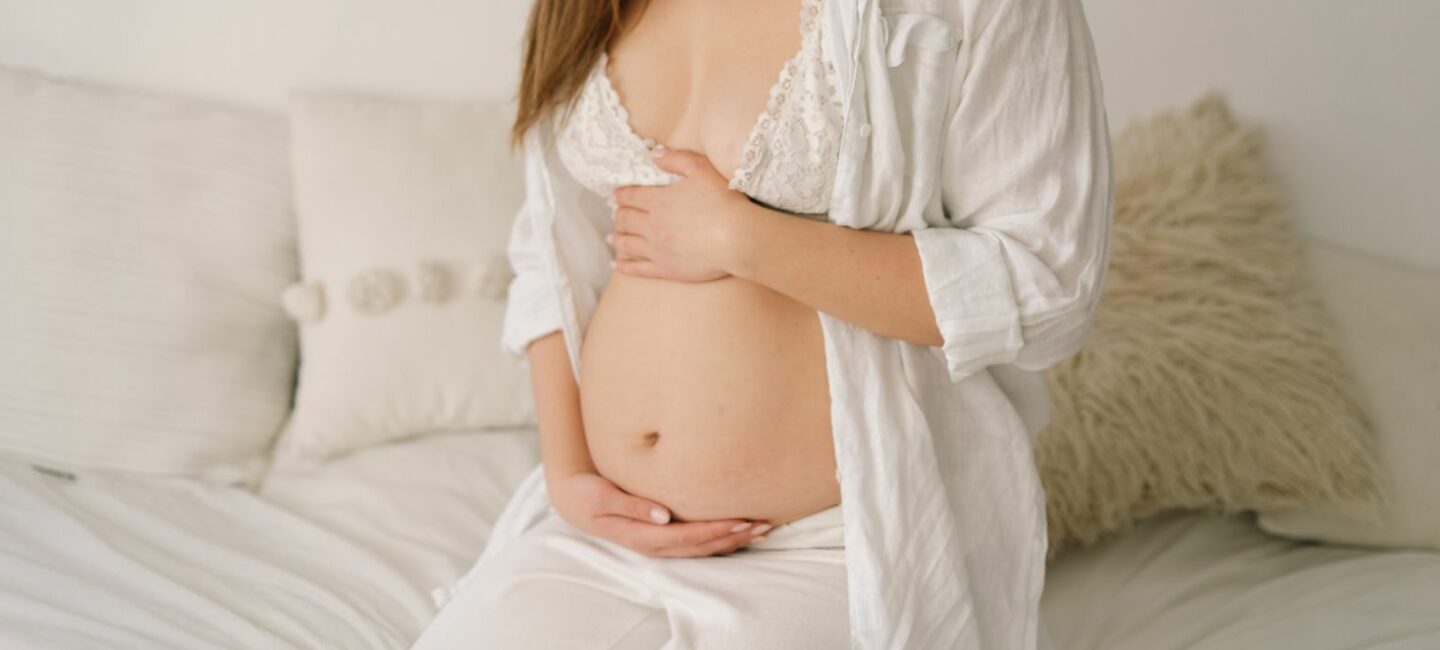
During pregnancy, a woman literally transforms. Little by little, there is an impressive bodily transformation, centered around the belly, which gradually curves beautifully over the months! During pregnancy, when and how exactly does this belly change? May explains everything.
When does the belly start to grow during pregnancy?
The appearance of the belly during pregnancy depends on a multitude of factors including the anatomy of each expectant mother, the baby’s position, and the number of pregnancies. For example, in a first pregnancy, the belly may not start showing until quite late, around the end of the second trimester. If you already have children, the belly might become noticeable as early as the first trimester of pregnancy. In short, as you’ve understood, there are no rules because every pregnancy is unique!
That’s why it’s important not to compare yourself to other pregnant women and not to pay attention to comments about the size of your belly!
What are the stages of belly growth during pregnancy?
Throughout the three trimesters of pregnancy, you’ll experience numerous bodily changes. However, we can’t really speak of “stages” here since the belly evolves progressively.
 To give you an idea of belly growth over the months, around the 10th week of pregnancy, or 12 weeks of amenorrhea (WA), the uterus is located just above the pubic symphysis. By the 18th week of pregnancy (20 WA), the uterus reaches about the level of the belly button.
To give you an idea of belly growth over the months, around the 10th week of pregnancy, or 12 weeks of amenorrhea (WA), the uterus is located just above the pubic symphysis. By the 18th week of pregnancy (20 WA), the uterus reaches about the level of the belly button.
From 18 WA onwards, the growth of the uterus is tracked by measuring the uterine height. The healthcare provider following your pregnancy uses a measuring tape to measure the distance (in centimeters) between the pubic symphysis and the top of the uterus.
What explains the progressive growth of the belly during pregnancy?
The evolution of your belly during pregnancy is linked to the growth of the fetus in the uterus! Indeed, your uterus grows along with your baby. In addition to a lifelike 3D representation, each week you’ll find a comparison between your fetus’s size and that of a fruit. For example, at 5 WA it is the size of a poppy seed, at 15 WA it’s about the size of a lemon, and at 39 WA it’s roughly the size of a watermelon! Clearly, the uterus has to adapt…
Here are some figures to help you grasp the impressive growth of the uterus:
Before pregnancy
Weight of the uterus (grams): 50
Size (centimeters): 7
Volume: < 4 mL
After pregnancy
Weight of the uterus (grams): 1000
Size (centimeters): 35
Volume: between 4 and 5 L
In most pregnancies, your body adapts to provide the safe haven your future baby needs.
So, it’s completely normal to see your body change as your belly rounds out. However, be mindful of your weight gain. If it’s excessive, it may increase risks such as vascular complications, cesarean deliveries, and contribute to long-term obesity. Conversely, insufficient weight gain can lead to low fetal weight and increase the risks of prematurity and perinatal mortality. To help track this evolution, it’s important to know your starting point. You can refer to the table below and calculate your BMI (body mass index) at the beginning of your pregnancy.
Grab your calculator: divide your weight (in kilos) by your height squared. For example, if you weigh 66 kg and measure 1.69 m, the calculation is as follows: 66/(1.69 x 1.69) = 23.1, which corresponds to a “normal” weight.
 (According to the IOM Pregnancy Weight Guidelines (Rasmussen, Catalano, and Yaktine 2009))
(According to the IOM Pregnancy Weight Guidelines (Rasmussen, Catalano, and Yaktine 2009))
What other changes occur in the belly over the months of pregnancy?
In addition to increasing in size, it is possible to notice other changes in your belly during pregnancy. Some examples of surprising physical changes?
- The dark line (or linea nigra): this is hyperpigmentation of the linea alba running from your pubic area to your navel. It may appear as early as the 1st trimester of pregnancy and gradually fades after childbirth, provided it is not exposed to the sun.

- Stretch marks: several factors may contribute to the appearance of stretch marks during pregnancy, including weight gain and genetic predisposition. Their occurrence is partly uncontrollable… but a bit of prevention can help limit their extent. Want some tips? It’s recommended to massage all areas where you gain weight (breasts, thighs, belly, buttocks) using a moisturizing cream on dry skin after a warm shower, starting from the end of the first trimester.
Let’s not forget one important change: inside your body! Your uterus grows and pushes against your organs like the bladder, intestines, and stomach… That’s why you may experience some unpleasant symptoms: difficulty holding urine, constipation, or acid reflux during pregnancy.
Want to learn more? Feel free to download the May app, where you’ll find plenty of resources to support and guide you throughout your pregnancy.
Do all pregnancy bellies grow the same way?
Every body is different, which is why each pregnancy belly grows in its own way and at its own pace. Some pregnant women have a large belly quickly, others have a smaller one until the end of pregnancy. The size doesn’t mean anything! Once again, there’s no point comparing yourself to others.
- In some cases, the belly sticks out less. Several explanations are possible: strong abdominal muscles, the baby’s low position, a first pregnancy…
- In other cases, it protrudes more for several reasons: a second child or more, a “high” position of the baby, relaxed abdominal muscles…
Only measuring uterine height and ultrasounds can confirm that your baby has a normal size and weight. Your doctor or midwife will monitor everything, so no worries! So, focus on your own belly rather than someone else’s.
Does the belly grow differently in a multiple pregnancy?
In a multiple pregnancy, your belly grows larger compared to a single pregnancy. That’s perfectly normal since more than one baby is living there! Don’t worry, your belly won’t burst. However, your skin is likely to be put to the test. The solution? Hydration (yes, once again)! It’s recommended to apply moisturizing cream regularly to your belly and chest. Make sure to check the ingredients and choose your skincare products carefully. Many pregnancy-safe creams and oils are available on the market.
❗Important: do not apply moisturizer 5 days before an ultrasound: it creates a barrier for the ultrasound waves and may reduce image quality.
Does the shape of the belly determine the baby’s gender?
According to some beliefs, the shape of the belly could reveal whether you’re expecting a boy or a girl.
Pointy belly? The baby would be a boy.
Round belly? The baby would be a girl.
Is this really reliable? We might disappoint you, but there is no scientific study to confirm this theory. However, you are free to believe it or not!
Keep in mind that your body shape is unique, and so it is during pregnancy! Do your best not to compare yourself to others (we know, it’s hard) because the shape and size of your belly say nothing about what’s going on inside… The most important thing is that you and your baby are healthy.
This text was translated from French by an artificial intelligence. The information, advice, and sources it contains comply with French standards and may therefore not apply to your situation. Make sure to complement this reading by visiting the May US/UK app and consulting the healthcare professionals who are supporting you.




